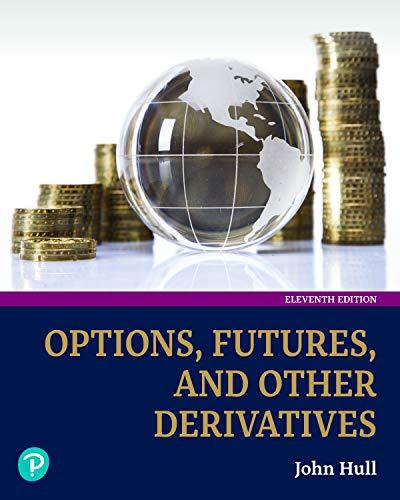The capital asset pricing model (CAPM) is a model that can be used to relate the expected
Question:
The capital asset pricing model (CAPM) is a model that can be used to relate the expected return from an asset to the risk of the return. The risk in the return from an asset is divided into two parts. Systematic risk is risk related to the return from the market as a whole and cannot be diversified away. Nonsystematic risk is risk that is unique to the asset and can be diversified away by choosing a large portfolio of different assets. CAPM argues that the return should depend only on systematic risk. The CAPM formula is
Expected return on asset = RF + b1RM - RF2 (3A.1)
where RM is the return on the portfolio of all available investments, RF is the return on a risk-free investment, and b (the Greek letter beta) is a parameter measuring systematic risk.
The return from the portfolio of all available investments, RM, is referred to as the return on the market and is usually approximated as the return on a well-diversified stock index such as the S&P 500. The beta 1b2 of an asset is a measure of the sensitivity of its returns to returns from the market. It can be estimated from historical data as the slope obtained when the excess return on the asset over the risk-free rate is regressed against the excess return on the market over the risk-free rate. When b = 0, an asset’s returns are not sensitive to returns from the market. In this case, it has no systematic risk and equation (3A.1) shows that its expected return is the risk-free rate; when b = 0.5, the excess return on the asset over the risk-free rate is on average half of the excess return of the market over the risk-free rate; when b = 1, the expected return on the asset equals to the return on the market; and so on.
Suppose that the risk-free rate RF is 5% and the return on the market is 13%.
Equation (3A.1) shows that, when the beta of an asset is zero, its expected return is 5%.
When b = 0.75, its expected return is 0.05 + 0.75 × 10.13 - 0.052 = 0.11, or 11%.
The derivation of CAPM requires a number of assumptions.7 In particular:
1. Investors care only about the expected return and standard deviation of the return from an asset.
2. The returns from two assets are correlated with each other only because of their correlation with the return from the market. This is equivalent to assuming that there is only one factor driving returns.
3. Investors focus on returns over a single period and that period is the same for all investors.
4. Investors can borrow and lend at the same risk-free rate.
5. Tax does not influence investment decisions.
6. All investors make the same estimates of expected returns, standard deviations of returns, and correlations between returns.
These assumptions are at best only approximately true. Nevertheless CAPM has proved to be a useful tool for portfolio managers and is often used as a benchmark for assessing their performance.
When the asset is an individual stock, the expected return given by equation (3A.1) is not a particularly good predictor of the actual return. But, when the asset is a welldiversified portfolio of stocks, it is a much better predictor. As a result, the equation
Return on diversified portfolio = RF + b1RM - RF2
can be used as a basis for hedging a diversified portfolio, as described in Section 3.5.
The b in the equation is the beta of the portfolio. It can be calculated as the weighted average of the betas of the stocks in the portfolio.
Step by Step Answer:






